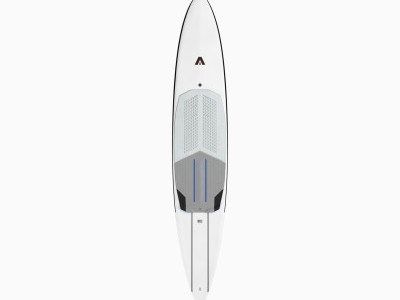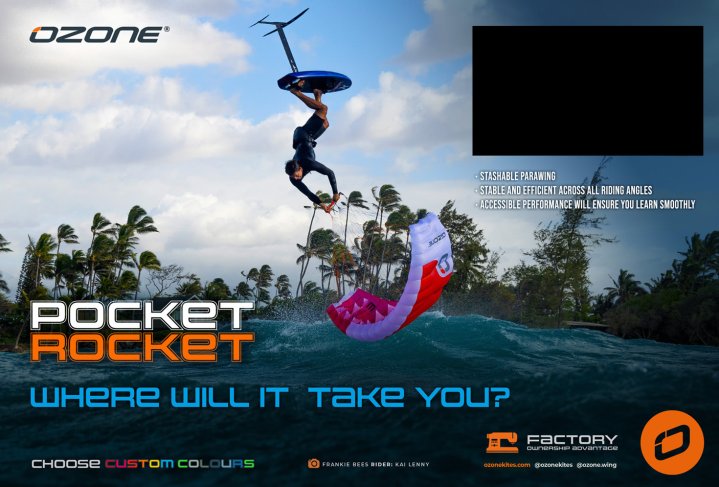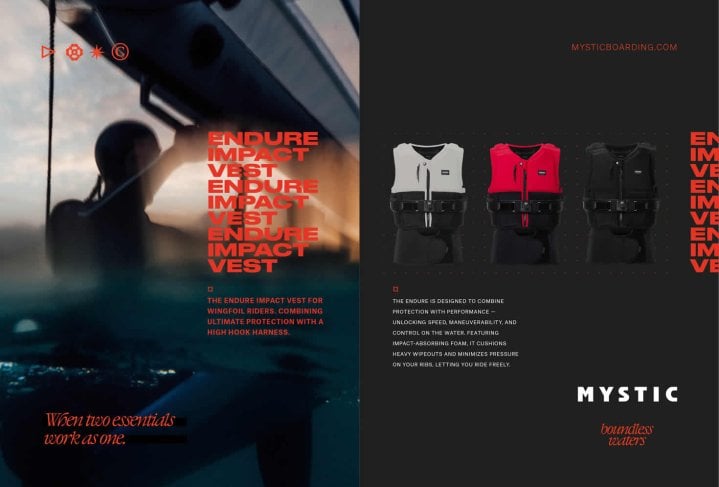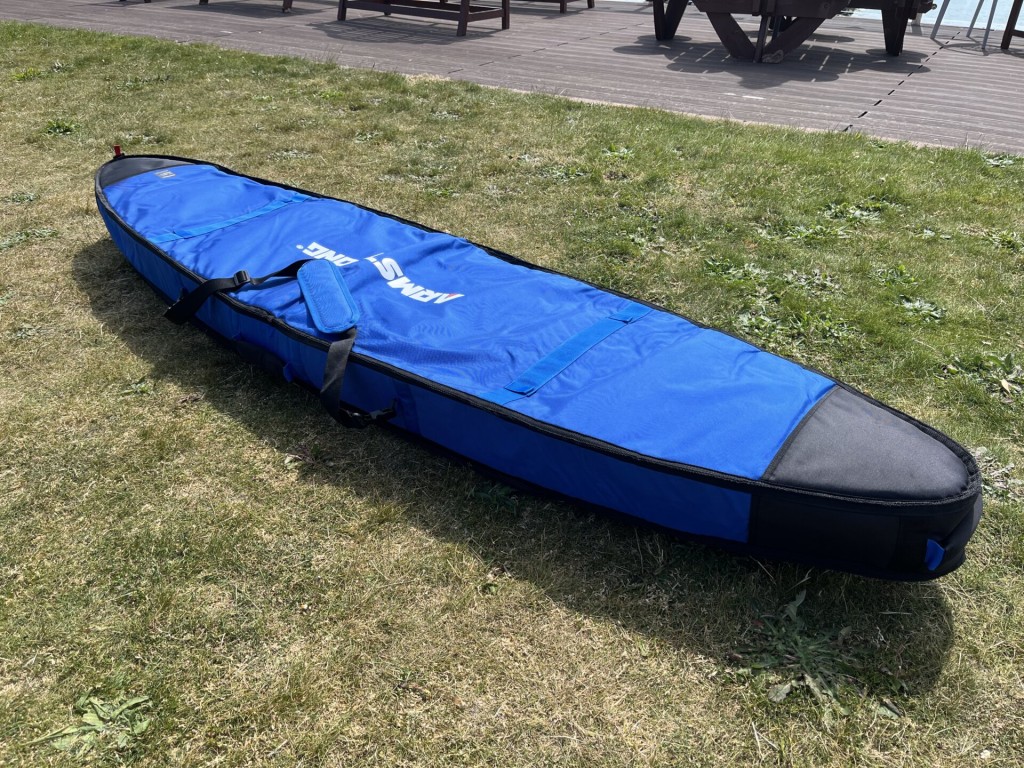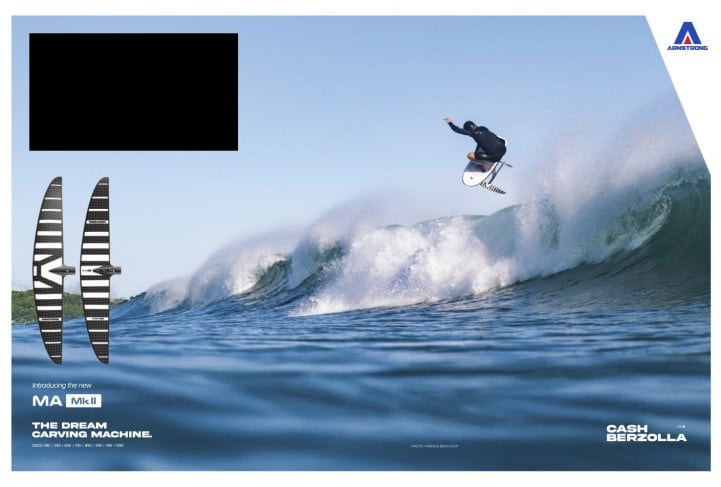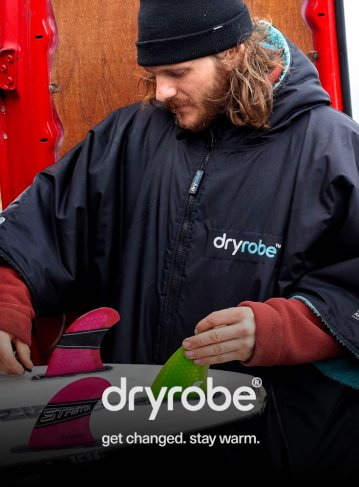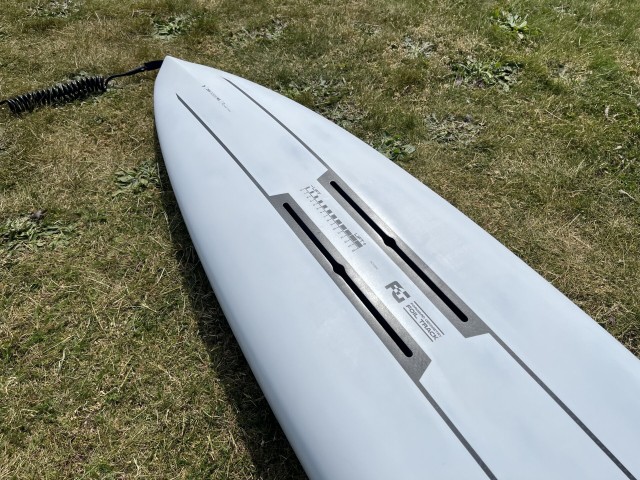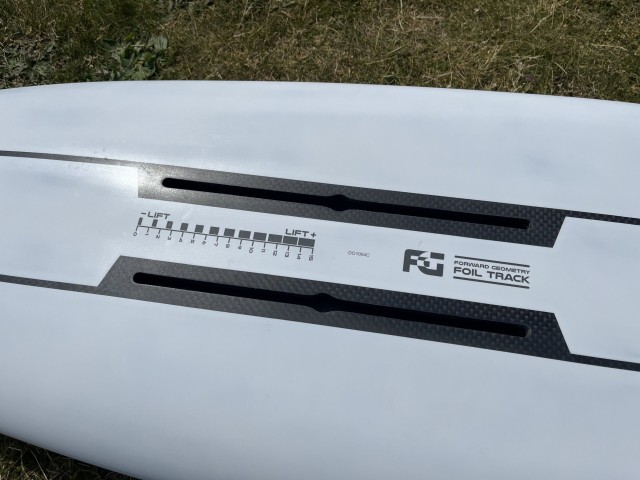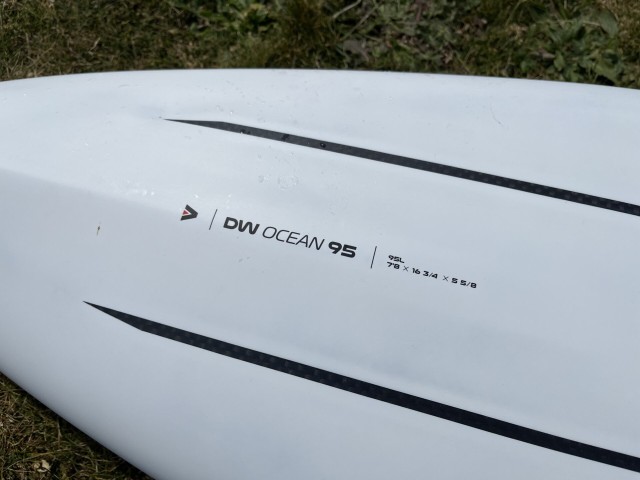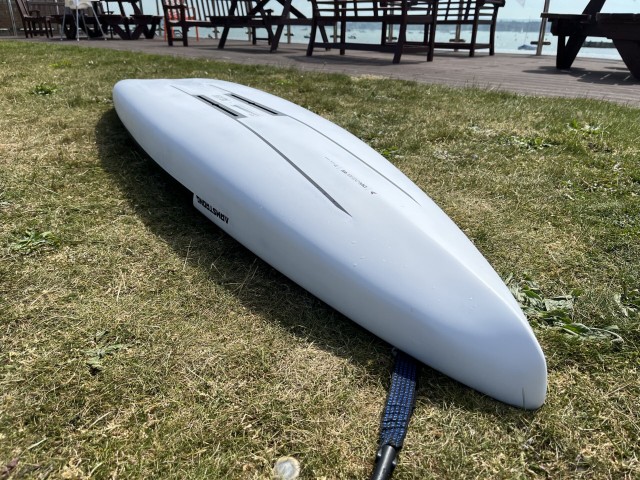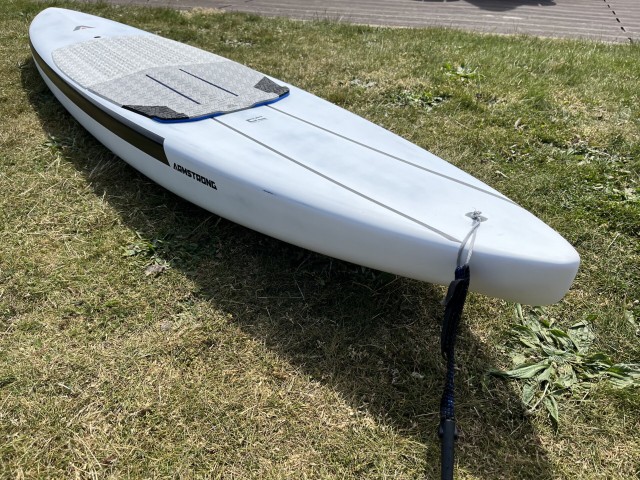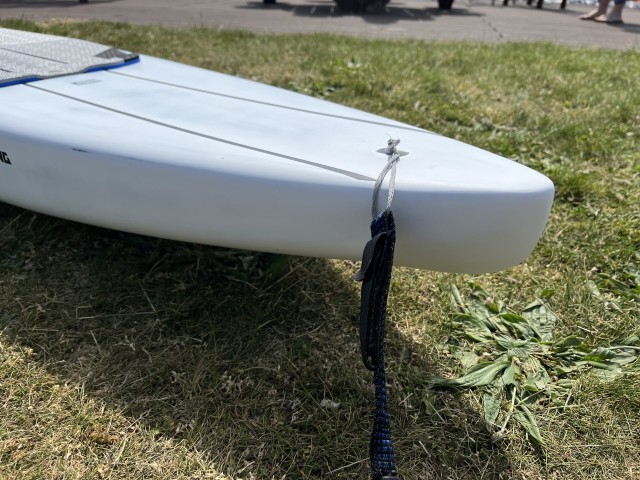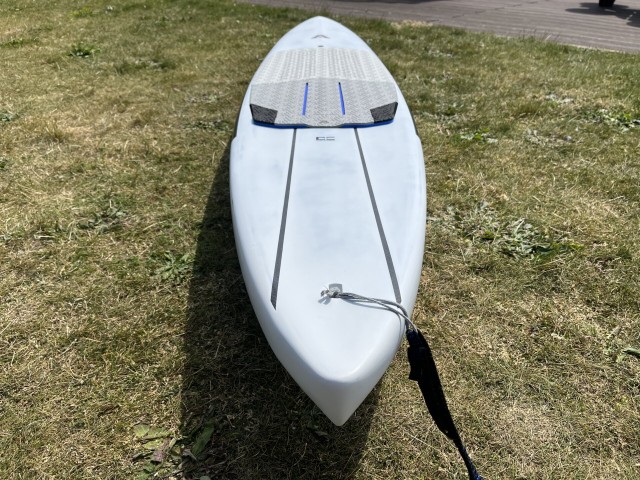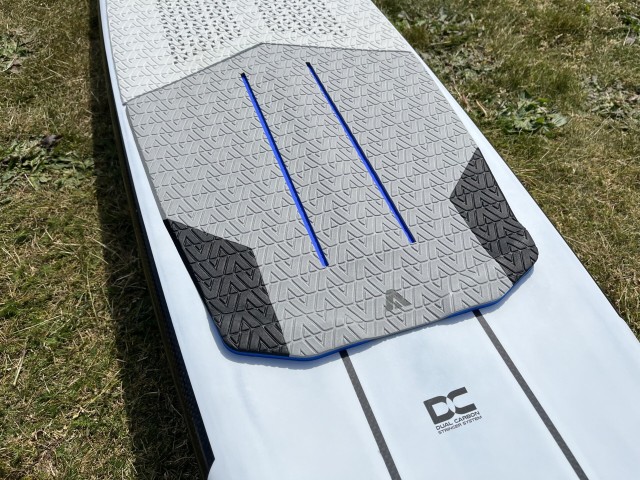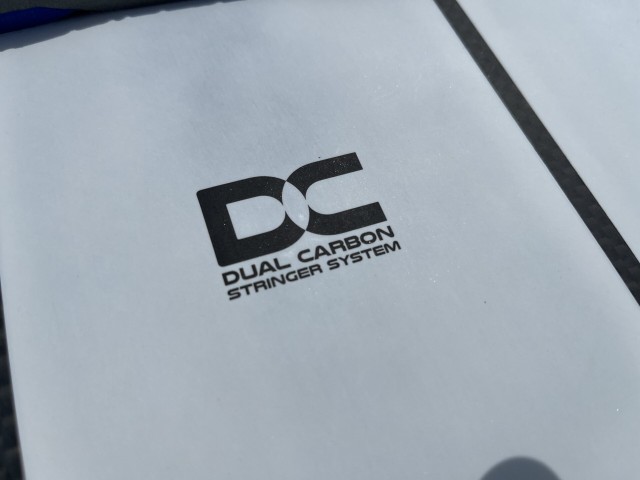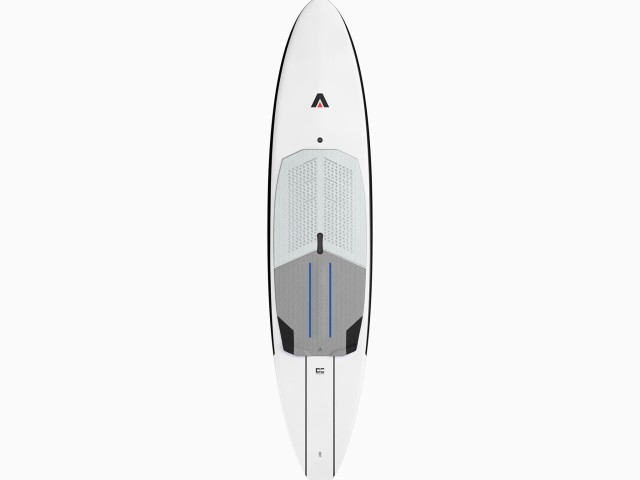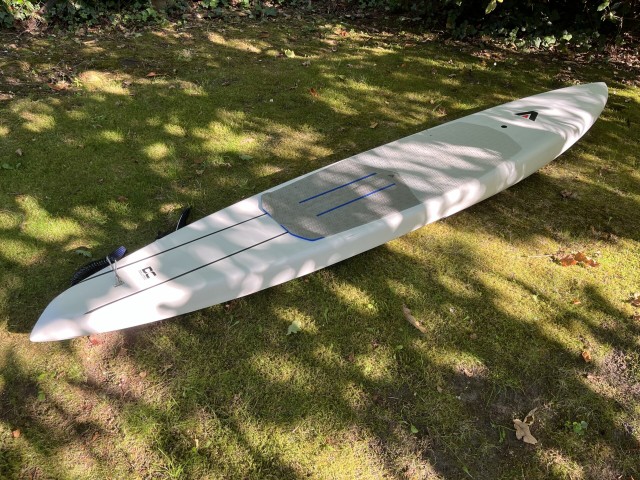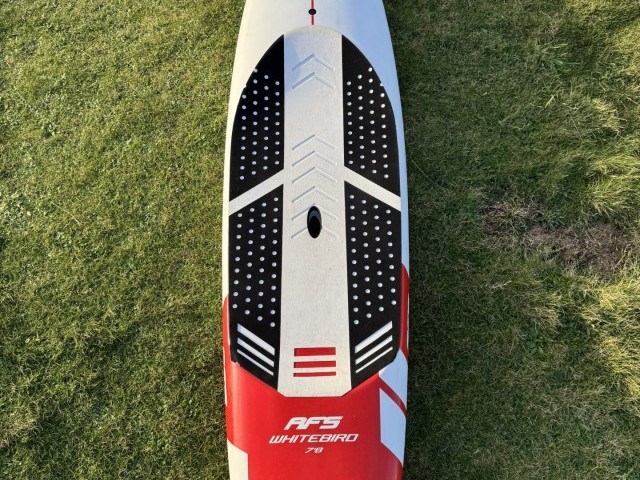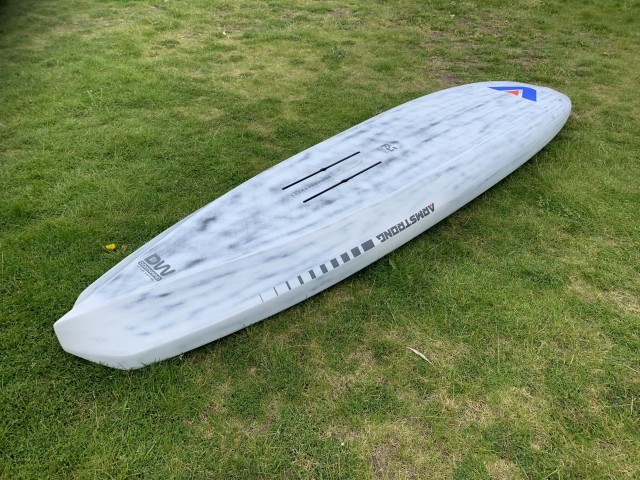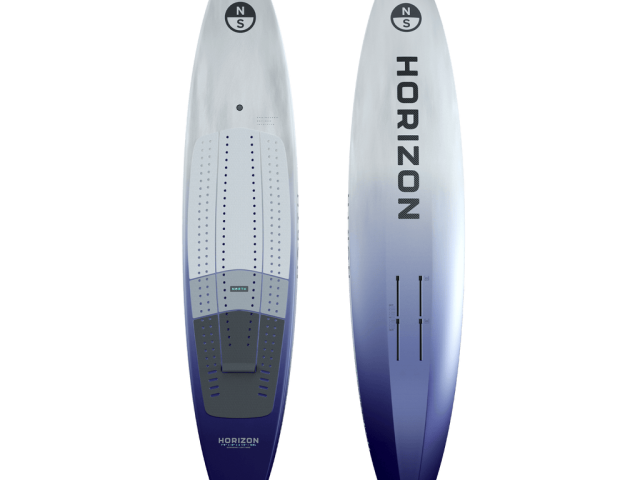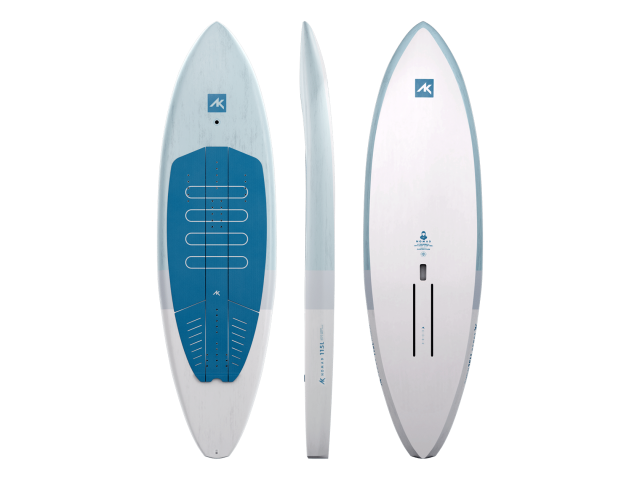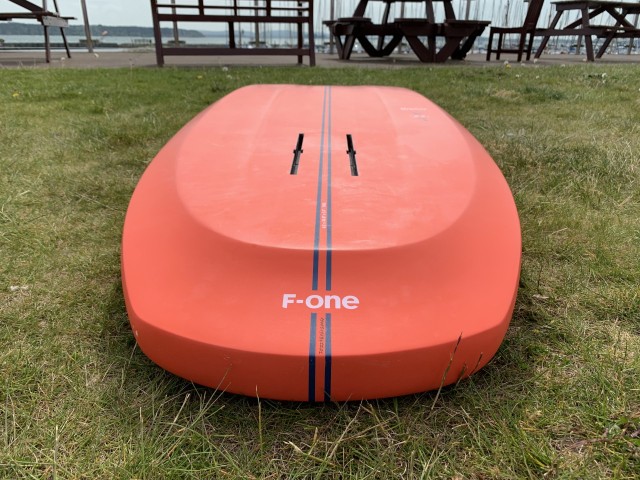At A Glance
Armstrong’s new Downwind Ocean range aims to refine everything riders loved about the original Downwind Performance series and package it into a sleeker, snappier, more agile board. I was pleased to be sent the smallest board in the line-up—7’8” (95L). It is 3 litres smaller and 6 inches shorter than its predecessor, the Performance 8’2.
Where the Performance board relied on length for glide, the Ocean aims to achieve it through hydrodynamics. Armstrong has designed a displacement hull—they claim it will slice cleanly through water, offering noticeable gains in paddle speed, efficiency, and tracking. How should that translate? Earlier lift, less fatigue, and more runs where you make the bump you thought you’d miss.
They’ve also updated the outline and created fuller rails, which should lead to better stability and paddle power. Subtle volume distribution, a flatter deck, and more rounded rails should also allow you to move your feet and lean into turns more confidently, which is essential when flying downwind at speed.
Under the hood, Armstrong’s stuck with its already solid dual carbon stringer system and proprietary foil track. Paired with the Forward Geometry mounting system, it’s ready to rip. As always, the board comes as standard with Armstrong’s now-famous board bag. This isn’t to be overlooked. Getting bags made for downwind boards is a very specific challenge that can be costly and take time, so I’m a fan of this feature.
On The Water
As you might expect, I was excited to get on the water and try out this new kit. But anyone based in Europe will know that we’ve had the most bizarre Spring. Easterly winds (very light) have been blowing off the continent for months, rather than our usual prevailing wind, the South-Westerly. This has meant we’ve missed all the usual low-pressure storms for which the UK is famous.
I honestly had the board for a month before I could get a couple of decent sessions in. When I finally got a 15 knot forecast, I headed for Lulworth Cove to send it down to Weymouth. As you’ll see in my review video, it was light, but the bumps were decent the whole way!
As it’s an exposed route with very few escape points, I rigged a big foil—the Armstrong APF1350. It flat water paddles up easily and glides amazingly well for its size. I paired it with the Speed 180 tail and 795 Performance Mast.
Balance-wise, with this board being 6 inches shorter and the same width (16&3/4 inches), I expected it to be a fair bit harder. To my surprise, it wasn’t. It honestly felt very similar in those initial stages, getting to my feet in the bumps and beginning to put power down. I’m finding it hard to explain this, but let’s just trust the designers, shall we? Clearly, a combination of the displacement hull and new rail shapes has worked its magic.
The first time I paddled to a takeoff, it flew so early that it took me completely by surprise, and I fell off! The next paddle up, I was ready. I know I had a big foil on, but honestly, in only about four strokes, I was up and flying. The board was so fast and efficient through the water. It punches well above its size thanks to that cutting-edge displacement hull. I think it’s here to stay!
The on-foil feeling was a joy, the shorter profile was instantly noticeable, firstly in how it fits between bumps and secondly in its pumping ability. The board feels super light, and I could easily connect bumps as I made my way downwind. The biggest difference with this displacement hull is the ‘pop-up’ ability, if I made a mistake and plunged the nose into the back of a wave. The old board would stick slightly, and it would take 5-10 strokes to get my speed back up and fly properly again. With this board, it would just bounce me straight back up in the air and often require no paddling at all. Again, another huge selling point for the Ocean’s hull shape.
Conclusion
In short, the Ocean offers high-performance downwind foiling with zero excess – everything you need, nothing you don’t. As you’ll see in my review edit, I had an absolute blast riding this board. If you’re looking for a high-performance downwind board, whether in the early stages of downwinding or an expert looking to go on the smallest foil possible, you can’t go wrong with the Ocean!
Look out for our following downwind review, where we’ll test the Armstrong Downwind Mk3, a slightly shorter, more stable board, designed to be more versatile and all about progression.
Videos
This review was in Issue 24 of Tonic Mag.
For more information visit Armstrong FoilsRelated
By Jack Galloway

